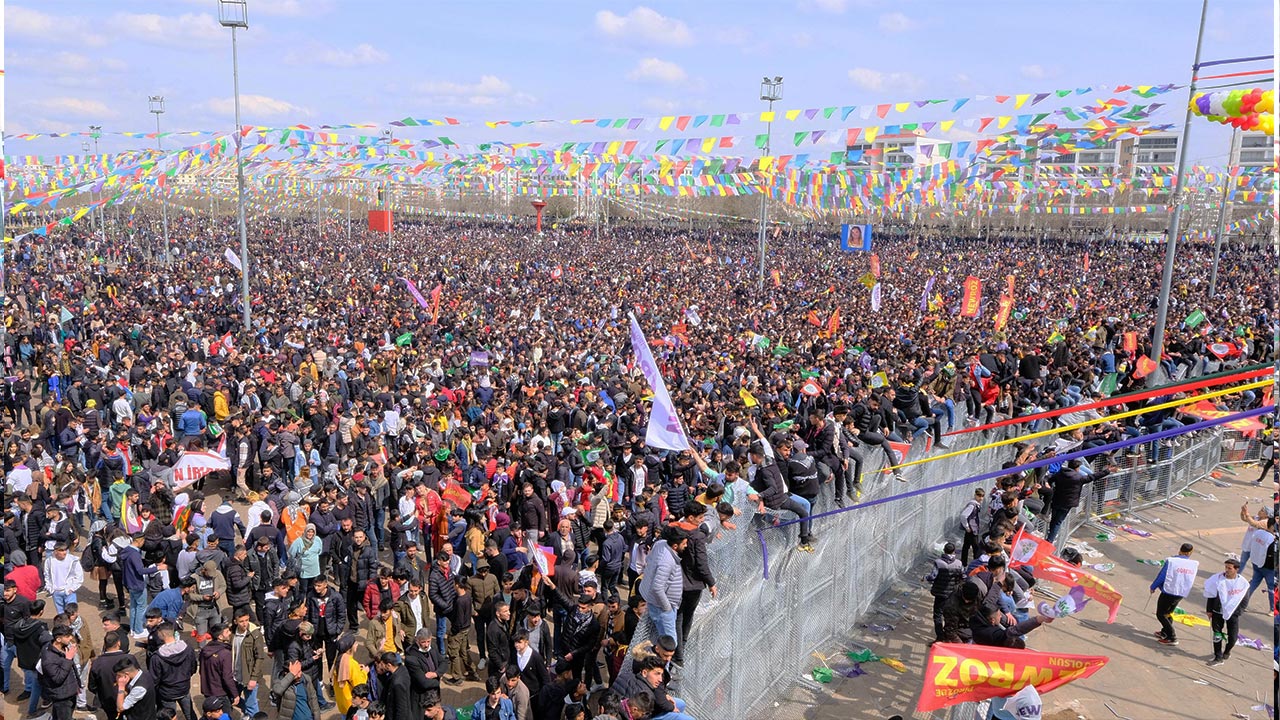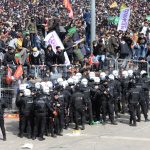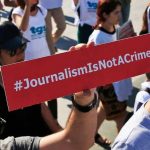Kurds, wherever they exist across the globe, celebrated Newroz on March 21, yet nowhere the celebrations carried the political import it had in Northern Kurdistan, where an estimated 20 million Kurds, as citizens of Turkey, have been striving for the recognition of their national rights for many decades.
Indeed, Newroz -or Nauryz, Navruz, Nawrouz, Nevruz, Nooruz, Novruz, Nowrouz, Nowruz as called by other peoples– is celebrated for over 3000 years in the Balkans, the Black Sea Basin, the Caucasus, Central Asia, the Middle East and other regions and is not specific to Kurdish culture, it emerges out of the ages of traditions of the pagan cultures of celebrating the arrival of spring and thus of the first day (New-roz=new day) of the New Year.
Nevertheless, Newroz, as celebrated by the Kurds, is uniquely perceived as part of a narrative what emerges out of the mythology of Kurdish renaissance – the “legend of Kawa the blacksmith”. In its Kurdish context Newroz is not celebrated simply as an act of gratitude to Nature for its gifts, nor as an objective relationship between humans and the nature, but subjectively, as a people’s own attainment of their right to enjoy the gifts of Nature, as a people’s own reconquering of its Natural rights from a tyrant -Dehaq- through a protractive collective struggle led by a craftsman – the blacksmith. Hence, Kurdish Newroz in its very origins is subjectively rooted to a people’s fight for survival, who -on every 21 March- celebrate their victory for having liberated themselves from the yoke of a tyrant who for generations had denied them the right to enjoy the fruits of Nature. Thus, spring in Kurdish mythology and for the Kurdish mindset is not God-given, but it is an human achievement, an aspect of their specific relationship with Nature, a right gained through political struggle. By its very nature the Newroz narrative is a purely political interpretation of human (Kurd’s) existence: “We fight, therefore we exist!”
This provides the background to the inflammable material in Kurds’ unique perception of Newroz, and of its perpetual renaissance in further politicized forms throughout the different phases of the development of the Kurdish history.
Kurds with 40 M (est) population are the biggest people on earth without a state. Their rights as a whole are yet to be internationally recognized and raised by their own representatives in international organizations.
However as declared by United Nations Educational, Scientific and Cultural Organization (UNESCO), “With relation to the 2003 Convention for the Safeguarding of the Intangible Cultural Heritage, Nowruz was inscribed as an element in 2009, and extended in 2016, on the Representative List of the Intangible Cultural Heritage of Humanity, at the joint initiative of Afghanistan, Azerbaijan, India, Iran (Islamic Republic of), Iraq, Kazakhstan, Kyrgyzstan, Pakistan, Tajikistan, Turkey, Turkmenistan and Uzbekistan.
“In 2010, the ‘International Day of Nowruz’ was proclaimed by the United Nations General Assembly in its resolution A/RES/64/253. This Resolution welcomes the efforts of Member States where Nowruz is celebrated to preserve and develop the culture and traditions related to Nowruz, and encourages Member States to make efforts to raise awareness about Nowruz and to organize annual events in commemoration of this festivity.”
Obviously the UNGA resolution tasks also the Turkish government -a signatory to the initiative of listing Newroz among “Intangible Cultural Heritage of Humanity”- “to preserve and develop the culture and traditions related to Newroz.”
Yet the weekend and the day of Newroz, 21 March 2022 in particular, in contrast to its UNESCO commitments, has witnessed a renewed display of official hypocrisy in Turkey. Let aside any official undertaking “to organize annual events in commemoration of this festivity” on part of the Turkish state, Kurds were denied the right to celebrate Newroz in their own initiatives, on the same day in every city or district, and they had to suffice with a part of the prospective total impact on each day. As for the festivities, instead of being provided with facilities in central squares by the public authorities, they were pushed to remote areas in the suburbs.
Nationwide, the event was turned into a security risk rather more than a popular festival. Wherever the people were still able to overcome the security and bureaucracy hurdles and organize an outdoor rally – in the midst of the worst cold wave of the year across the country, under heavy snow and cold – the roads to the events were cut off from traffic, the participants were intercepted for arbitrary searches; their gear was not welcomed, their banners and placards were banned and seized – yet Turkey witnessed the most populous, crowded and energetic Newroz celebrations since 2015.
In 2022 Newroz celebrations across metropolitan areas of Turkey (and of North Kurdistan) millions – on 19, 20, 21 March- have taken to the streets, gathered in the rallies and festivities under the catchword “Dem dema serkeftinê ye” [It’s time to win now] and dedicated the Newroz 2022 celebrations to the “Freedom of Öcalan”.
Once again, the Kurdish narrative of Newroz has taken its particular path with renewed synergy. Northern Kurds, who were denied political rights, political organizations, language and culture in the first 50 years of the Republic of Turkey, had found their way to the public sphere through the revival of the Kurdish identity in cultural forms that followed the 1980s’ Kurdish insurgency in the Kurdish countryside. Decades of “graveyard silence” – the outcome of the successive Kurdish massacres of the 1920s and the extensive purges that followed: the ban on the language, the culture, the names, the costumes – was teared in the 1990s through the revival of Newroz celebrations in the Kurdish countryside – the home to insurgency.
Inevitably, the Turkish state would assume the part of Dehaq in the Kurdish social imagination when the brutal suppression of 1992 Newroz celebrations in the Kurdish towns of Cizre and Nusaybin had left behind tens of deaths, mostly women and children. Hence, throughout the whole course of the Kurdish Question in Turkey the legend of Kawa has become the reality while the reality in turn has confirmed the legend along with the Kurdish renaissance.
30 years on, Kurds have become the most active element in Turkey’s politics, their narrative of their own being – contrary to stereotype political expectations and prejudices and instead of fanning petty nationalism, and dividing the political dissent along national lines – have induced the Kurdish masses to bring about the most novel political organization of Turkey’s political history- the Peoples’ Democratic Party (HDP), the joint political party of Turkey’s left and democratic forces and the Kurdish liberation movement.
It is not surprising then, Kurdish people 30 years after the Newroz massacres of Nusyabin and Cizre dedicates 2022 Newroz celebrations to Abdullah Öcalan, the incarcerated leader of the people, who was the mastermind behind the new course of Kurdish politics inspired by the Kurdish communal heritage. Kurds, in the 30 years of relentless struggle Newroz by Newroz, are now reborn from their ashes to provide a common narrative for social liberation to all communalist forces of the globe. They are indebted to no power on earth or in the heavens but their own will and vigorous struggle, inspired by their own egalitarian heritage and the lessons of past revolutions.
By: Ertuğrul Kürkçü
Source:MedyaNews
***Show us some LOVE by sharing it!***



